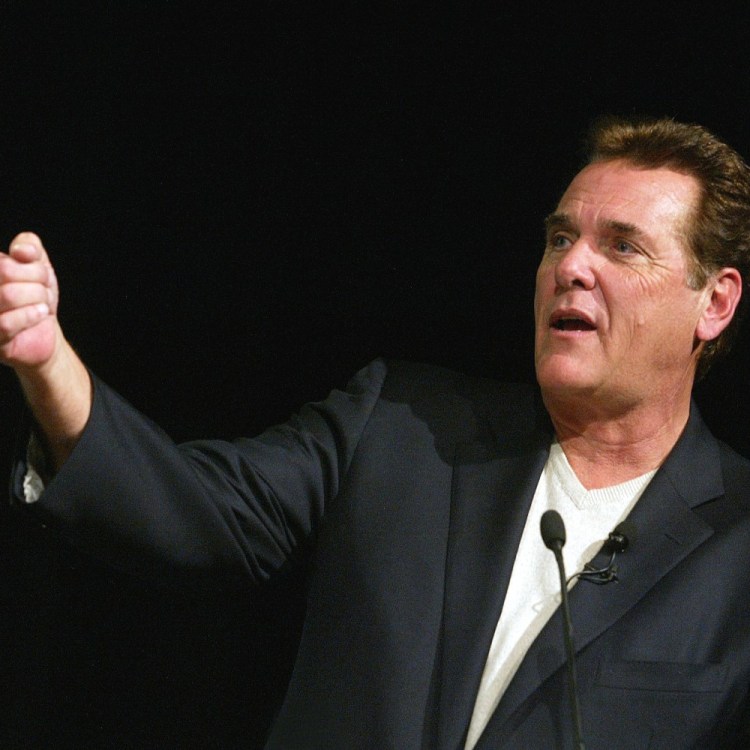The cable box seems to be going the way of the DVD player and Facebook—it’s definitely still around, but is increasingly being used by mainly your parents (or grandparents) and their peers. Even if you still have one, you’re likely already exploring other viewing options.
In fact, according to a new survey from research and consulting firm PwC, while 61 percent of respondents in 2015 were exclusively traditional pay TV subscribers, only 46 percent were pay TV loyalists in 2017. And more people are cutting the cord entirely—27 percent in 2017 versus 18 percent in 2015.
“We’re moving into an era where just about anybody can cut the cord from cable or satellite,” says Jim Kimble, founder of The Cord Cutting Report. “With the rise of live streaming TV over the Internet, it’s not a question of whether I can get a channel like ESPN if I dump my cable subscription. It’s a question of what provider do I want to get it from, and which one will give me the best price and channel bundle I want.”
Indeed, new services designed to keep you glued to your TV (or handheld) screen seem to roll out every day. One of the latest to hit the scene comes with a familiar name: YouTube TV launched in April, serving five market areas to start and expanding rapidly to a total of 84 markets, adding 34 new areas in December. With it, you can stream and record live TV from major broadcast networks and a variety of popular cable channels including ABC, CBS, Fox, NBC and AMC. The service costs $35 a month—coincidentally, less than the similar $40-a-month service offered by Hulu.
You can find plenty of ways to watch TV for virtually no cost, too. Without even springing for Internet service, you can use an antenna to tap into a bounty of local channels. And you don’t have to settle for homemade rabbit ears to watch a handful of channels (though you could—no judgement). Just like all other aspects of TV-viewing, antennae options have evolved, and you can find some heavy-duty hardware that can pick up dozens of channels or more. In one review, Kimble recommends the Mohu Leaf Glide and reports getting around 60 channels using it in an area with ample access to broadcast towers. You might balk at the current price—on sale for $75 (for an antenna?!)—but the one-time outlay still costs less than a monthly cable subscription in the long run.
Not that you can avoid all monthly bills by cutting the cord. Besides going the antenna route, any other sans-cable TV-watching strategy is going to require Internet access, which can be pretty costly on its on and only slightly less than bundling it in with cable and phone service. That’s how they get you. But Kimble says you can negotiate your way to a lower-than-advertised price. “What many consumers don’t know is that you can’t simply ask for a reasonably priced rate for Internet,” he says. “You have to tap into what’s known as the ‘secret rate chart’ used by cable companies to retain customers.”
The key to doing that, he says, is to be willing and ready to actually cancel your service if the company doesn’t give you the lower rate. Also be sure to ask about any additional fees and find ways around them. For example, Kimble’s service provider charged him monthly equipment fees, so he opted to purchase the router and modem to skip those additional costs.
And don’t worry about the net neutrality issue bumping up your Internet costs quite yet. “I don’t think anyone has to worry about paying more for their Internet service in the near future because this is an issue that the American public is watching closely,” Kimble says. “It’s going to take a while for the debate about net neutrality to play out.”
So now that you’re convinced it’s time to cut the cord, what streaming services are right for you? It depends on what kind of TV watcher you are.
Here are some suggestions for various types of TV-viewing personalities:
Cinephile
Netflix (starting at $7.99 a month for basic), Hulu (starting at $5.99) and Amazon Prime Video ($8.99 a month) are the big dogs of streaming and each offer a vast library of movies, as well as documentaries, TV shows and original content. Also consider FilmStruck, which offers an array of contemporary and class art house, indie, foreign and cult films. You can subscribe for the basic package for $6.99 a month, or upgrade to get the Criterion Channel for $10.99 a month or $99 for a year.
News Junkie
You can catch up on the latest news using any of the live services listed above for sports fans. Also, your streaming device—whether it’s a Roku, Apple TV, Amazon Fire TV or other Smart TV—you may have access to a number of network news apps, such as CNNgo, Fox News, CNBC and ABC News. You can also check out RatedRed, a digital video network focused on delivering news to and from Heartland Millennials.
Sports Fan
The live offerings from YouTube TV and Hulu, as well as Sling TV ($20 a month) and DirecTV Now ($35 a month), let you catch all the games broadcast on major networks ABC, CBS, NBC and Fox—plus they include ESPN. Next year, the sports-centric network will roll out its own service, ESPN+, with a “‘Netflix-like aggregation’” of sports shows, documentaries and live events,” reports SportTechie. You might also consider FuboTV, which gives you access to more than 80 channels live and focuses on local sports. The service starts at $19.99 a month for two months and goes up $44.99 a month.
This article was featured in the InsideHook newsletter. Sign up now.
























